Forget all of the places I’ve seen, the friends I’ve made and the experiences I’ve had. Everybody always asks me the same question about my travels: How did you pay for it?
Before I started my round-the-world trip, I couldn’t imagine how anyone could afford such a thing. It seemed like the most ridiculous, far-fetched idea ever — especially for someone working on a journalist’s salary.
Then one day I realized not every traveler out there is a trust fund baby, and somehow they made it happen. From that moment on, I worked on turning my dream into a reality. Here’s how I did it.
1. I saved. I know it sounds terribly boring, but it’s true. I pulled the reins on a lot of extraneous spending — I stopped going out, I carried my lunch to work, I brewed my own coffee, I watched movies on DVD instead of going to the theater, I quit my online shopping habit. (You already know all of this stuff, but I swear it works.)
TIP: Hard economic times call for flasks, so I created something that I call “purse wine.” When I wanted to be social but couldn’t afford a full night out at a fancy bar, I’d still meet my friends and I’d order a glass of house wine … which I would later discreetly refill from a small bottle in my purse. Everybody wins. The bar still gets money, I have a night out with my friends, and I end up spending something like $10 instead of $40. Be warned, though, I think it’s illegal to carry your own booze into an establishment.
Seriously. They make these wines portable for a reason.
2. I sold things. My car went on Craigslist, my clothes went to a consignment shop, my electronics went on eBay. I also had two huge garage sales. And believe it or not, I still have a lot of things to sell.
TIP: I only reaped a few hundred dollars at each garage sale, and it wasn’t worth it for the time and effort spent putting them together and advertising them. This time around I’m going to try having a virtual garage sale by posting all of my goods on one site, then putting links on Facebook, Twitter and Craigslist. I’ll let you know how that goes.
3. I worked. Nobody paid for me to travel. I didn’t have an assignment. I didn’t have a trust fund. In order to keep my bank account afloat, I sold some freelance writing and photography along the way.
TIP: Most of the longterm travelers I met on the road sustained themselves by designing websites, but other folks were teachers, lawyers, accountants, hair dressers. It’s definitely possible to turn your profession into cold, hard pesos while you’re on the road.
4. I went to cheap places. I’m one of those people who wants to see everything, so I didn’t have a burning desire to go to, say, France over other locales. Since my priority was to make the money last as long as possible, I literally googled “world’s cheapest countries” and built the framework of my itinerary from that.
TIP: Some places turned out to be more expensive than planned (like Argentina and South Africa), which caused me to cut out a few more expensive countries at the last minute (Tanzania, Botswana).
5. I stayed in cheap places.
Sometimes I camped.
Sometimes I slept in dorms.
Sometimes I stayed in places that were worth far more than the $6 price tag.
And sometimes the places looked like crime scenes.
Yes, I could have stayed at nicer hotels, but then my trip would have ended in one month instead of 12.
TIP: Whenever I went to a new country, I booked my first night in advance. After that, I asked other travelers for advice or walked around to find more economical digs. I almost always found a place that was better, cheaper or more comfortable.
6. I ate cheap things. That doesn’t mean I ate bad things. In fact, I ate really well — I just didn’t pay a lot for it.
I kept some staples in my backpack like crackers, peanut butter, packets of instant oatmeal, dried fruit and a jar of instant coffee. That’s what I ate most days for breakfast or lunch. Then I paid a visit to the markets, both to get the local flavor and to get some fresh produce, which helped me toss together some easy, inexpensive meals like instant noodles with spinach, mango and bean salad, stir-fried veggies and rice.
By cooking most of my meals, that meant I had more money to spend on restaurants, pubs and street food. I rarely spent more than $5 a day on food, but I still sampled what every country had to offer.
TIP: Street eats are the best. In my experience, the vendors’ stalls are cleaner than restaurant kitchens, everything is fresh because they have a high turnover of food and you can see exactly what you’re getting into before you ever order or pay. Most important, the food is inexpensive, authentic and not geared toward tourists.
7. I shared. Traveling with two (or more) is almost always cheaper.
TIP: Even though I was traveling solo for most of this trip, I made friends with other travelers along the way. If we were headed in the same direction, I made an effort to see if they wanted to split a cab, a meal or even a room for the night.
For example, Linsay (the Irish lass) and I traveled through most of Vietnam together.
8. I haggled. It is not in my nature to haggle over prices, so this is a skill I worked hard to develop. Basically I learned that you can’t get a discount if you don’t ask. Also, in most of the countries I visited, haggling is expected.
I even managed to get some free pineapple with these dumplings. Score!
TIP: Here are the three biggest rules for haggling: Never look like you are interested in what you’re buying. Have a price in mind and never pay more than that. Be prepared to walk away.
9. I skimped. I couchsurfed. I camped. I volunteered. I took a lot of buses instead of planes. I rented bikes instead of getting cabs. I walked. I asked about free museum days. I found discounts. I used frequent flyer miles. I didn’t buy many souvenirs.
TIP: Every time I booked a tour, I was disappointed. I found that by doing walking tours or putting together my own itinerary, I saw more of the things that interested me and I saved money while still learning a lot about a new place. This street art in Kuala Lumpur, for instance, will never be on any tour — but I’m so glad I found it.
10. I have amazing friends. My computer suffered a tragic death in Argentina, and then I made two South African men very rich while they tried to fix it ripped me off. This put an enormous dent in my budget — and worst of all, I wasn’t able to do my work without a computer.
That’s when my high school boyfriend made a blog about my situation and asked for donations. Friends from all over the world contributed what they could, which lead to the computer I’m using right now. That extraordinary effort meant so much to me, and I am grateful to have such ferociously good people in my world.
TIP: You know that beautiful scene from “It’s a Wonderful Life” where people flood George Bailey with money when he needs it most? I lived it, and it’s an incredible thing. This showed me how important it is to cherish your relationships.
MY BUDGET
I saved $10,000 to begin my trip. I made another $5,000 by working while traveling. Then I was slammed with a last-minute medical bill for $2,000, when my insurance company refused to pay for surgery on my broken foot.
I booked most of my flights in advance using AirTreks, a company that specializes in putting together difficult itineraries on a budget. My flights from continent to continent came to around $2,500 total. I purchased some smaller fights in between, like from Hanoi to Vientiane, when I couldn’t bear to do 30+ hours on a terrible Vietnamese bus.
I spent way too much on gear in advance, giving REI a big chunk of money. Maybe $1,000? I don’t know. I’m trying to block that from my memory.
I’m not one of those people who writes down everything I spend and files it away in a Quicken document. I saw those travelers, and I admire them. But I don’t do things that way, and I didn’t want to spend all my travel time hunkered over a spreadsheet.
Instead, my strategy was to keep an approximate budget of $27 a day. (Hey, that’s cheaper than Rachael Ray’s daily food bill!) I kept track of the numbers in my head, and I was very free flowing about it. Sometimes I came under budget, which meant I could spend a little more the next day. Or, if I spent more than $27, I knew I had to spend less the following day.
I did splurge for some expensive things, like the gorilla trek in Rwanda (the permit from the government is $500), but that was one of those once-in-a-lifetime opportunities. I knew I would regret it if I didn’t do it.
It took many, many $10 days to save up enough for that $500+ day, but you know what? It was worth every penny.
Overall, I spent less than I would have by living in the U.S., but I came home far richer.
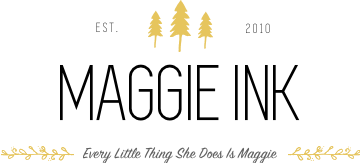

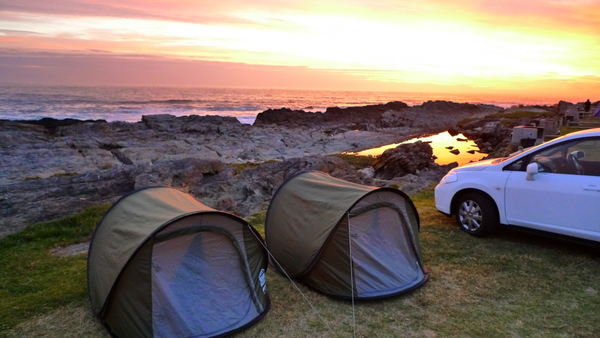
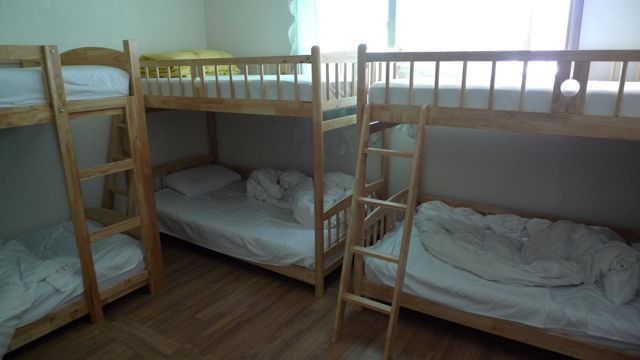

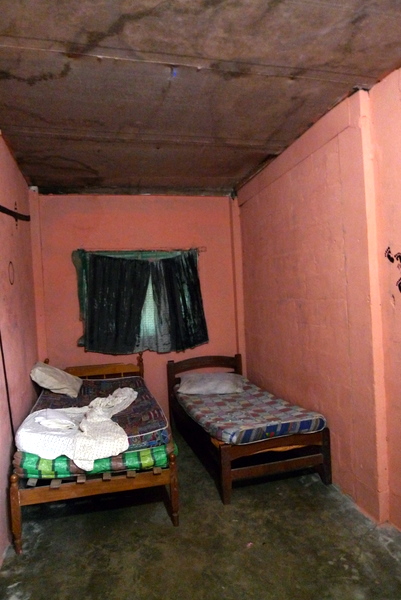




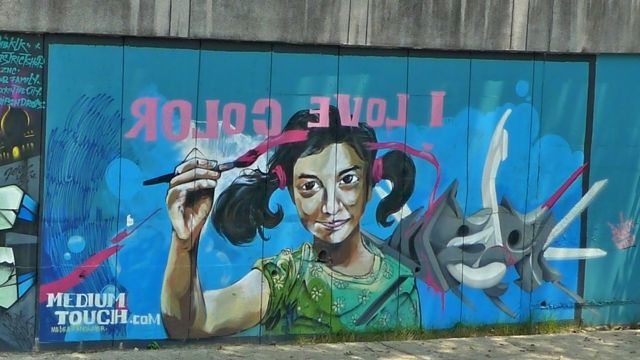
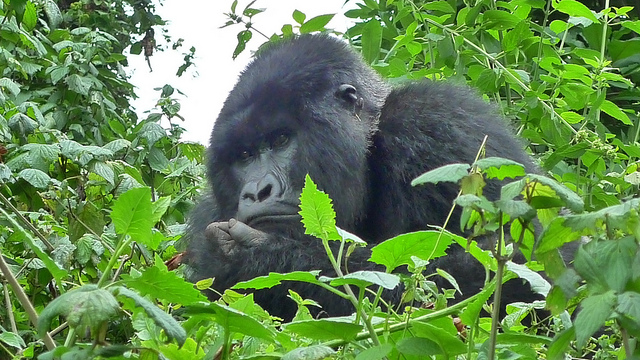
2 Comments
OMG Maggie! I am such a chicken, I would never even consider trying what you did. I ‘m glad you did it, though. It’s easy to tell what a great time it was for you. I might have gone to see the gorillas. I think. I’m not going to ask if you got enough material to use this year or maybe even decade. You should have heard my son when he was telling me about your computer. He was thoroughly ticked.
Take care of yourself. If you write up any of this send me a link. I loved what you sent.
Dinah : )
SO TRUE! I’m glad you pointed out arranging your first night’s stays. I do that with transport too since usually (when on the last leg of the trip) I’m exhausted + unfamiliar with a new area + have baggage to lug it’s worth $10 extra to just get to the hostel in one piece/as fast as possible/with everything you need. Can’t believe you made that much working! Smart cookie =)